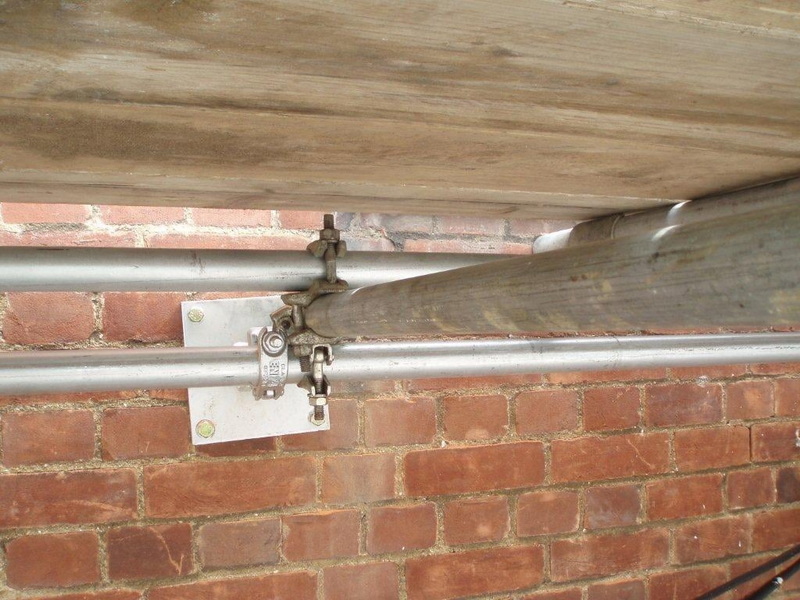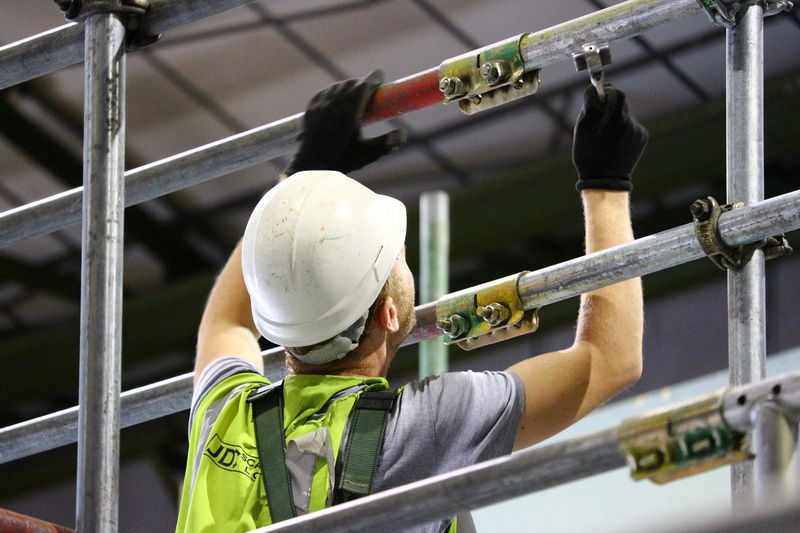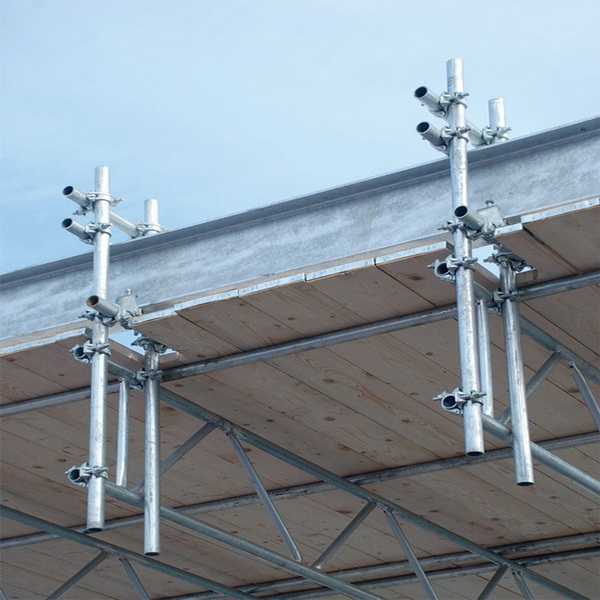Content Menu
● Introduction to Tube Scaffolding
● Essential Tube Scaffolding Parts
● Assembly Techniques for Tube Scaffolding
● Safety Considerations
● Types of Scaffolding
● Conclusion
● FAQ
>> 1. What are the primary components of tube scaffolding?
>> 2. How do you ensure the stability of a tube scaffold?
>> 3. What safety measures should be taken when using scaffolding?
>> 4. What types of scaffolding are commonly used in construction?
>> 5. How often should scaffolding be inspected?
● Citations:
Tube scaffolding is a crucial component in construction projects, providing a safe and stable platform for workers to perform their tasks efficiently. Understanding the essential parts of tube scaffolding is vital for ensuring safety, efficiency, and compliance with regulatory standards. This article will delve into the key components of tube scaffolding, their functions, and how they contribute to the overall structure.

Introduction to Tube Scaffolding
Tube scaffolding, also known as tube and clamp scaffolding, is widely used due to its flexibility and strength. It consists of steel tubes connected by clamps, which allow for easy assembly and disassembly. This type of scaffolding is preferred for its versatility and ability to adapt to various building shapes and sizes.
Essential Tube Scaffolding Parts
The following are the essential components of tube scaffolding:
1. Base Plates
- Function: Base plates are flat supporting plates that distribute the weight of the scaffold evenly, ensuring stability and preventing the structure from sinking into the ground. They are typically attached to the ends of vertical scaffold standards or uprights.
- Types: Flat, angle flat, and ribbed or spigot base plates are common types, each suited for different scaffold configurations.
- Dimensions: Standard base plates are usually 150mm x 150mm with a thickness of at least 6mm for adequate support.
2. Sole Plates
- Function: Sole plates, often referred to as base plates, are critical for distributing the weight of the scaffold and its occupants, providing stability and preventing the structure from sinking into the ground.
- Dimensions: Recommended dimensions are 200mm in width and 25mm in thickness for effective load distribution.
3. Standards (Uprights)
- Function: Standards are vertical tubes that form the main framework of the scaffolding. They support the entire structure by bearing the load and providing vertical support.
- Material: Typically made from high-strength steel for durability.
4. Ledgers
- Function: Ledgers are horizontal tubes that connect the standards together, aiding in load distribution and providing lateral support for the scaffold.
- Role: They are parallel to the building's facade and play a crucial role in the structure's overall stability.
5. Transoms
- Function: Transoms are horizontal members that run parallel to the ledgers. They strengthen and support the scaffold structure, increasing its load-bearing capacity.
- Use: Particularly useful for supporting scaffold boards or platforms where workers stand or place materials.
6. Bracing
- Function: Bracing provides additional stability to the scaffold by preventing it from swaying or collapsing. It includes longitudinal and diagonal bracing.
- Types: Interlateral bracing is also used to enhance stability between bays.
7. Platform/Decking
- Function: Platforms or decking provide a safe working surface for workers. They are typically made from wooden planks or metal grating.
- Safety: Toe boards and guardrails are essential for preventing falls.
8. Clamps
- Function: Clamps are used to connect tubes together, forming the structure of the scaffold. Right-angle couplers and swivel clamps are common types.
- Material: Made from high-quality steel for durability.

Assembly Techniques for Tube Scaffolding
Assembling tube scaffolding requires careful planning and execution to ensure safety and stability. Here are some key assembly techniques:
- Tight Connections: Ensure all tubes are tightly attached to base plates and other parts.
- Right-Angle Couplers: Use for straight and vertical connections.
- Swivel Clamps: Ideal for angled and bracing connections.
- Bay Spacing: Maintain a space of about 2.0 m (6 ½ ft) between bays and levels.
Safety Considerations
Safety is paramount when working with scaffolding. Here are some key considerations:
- Regular Inspections: Regularly inspect scaffolding for damage or wear.
- Proper Training: Ensure workers are trained in scaffold assembly and use.
- Compliance with Standards: Adhere to OSHA standards for scaffold safety.
Types of Scaffolding
There are several types of scaffolding, each suited for different construction needs:
- Single Scaffolding: Used for brick masonry.
- Double Scaffolding: Used for stone masonry.
- Cantilever Scaffolding: Used when the ground is not suitable for scaffolding.
- Suspended Scaffolding: Used for high-rise buildings.
- Trestle Scaffolding: Used for indoor work.
- Steel Scaffolding: Constructed from steel tubes and couplers.
- Patented Scaffolding: Ready-made scaffolding with fixed dimensions.
Conclusion
Tube scaffolding is a versatile and essential tool in the construction industry, providing a safe working platform for various tasks. Understanding the essential parts of tube scaffolding, such as base plates, standards, ledgers, transoms, bracing, platforms, and clamps, is crucial for ensuring safety and efficiency. Proper assembly and adherence to safety standards are vital for preventing accidents and ensuring successful project outcomes.

FAQ
1. What are the primary components of tube scaffolding?
The primary components include base plates, standards, ledgers, transoms, bracing, platforms, and clamps. Each part plays a crucial role in the stability and safety of the scaffold.
2. How do you ensure the stability of a tube scaffold?
Stability is ensured by using base plates to distribute weight evenly, securing tubes tightly with clamps, and installing bracing to prevent swaying.
3. What safety measures should be taken when using scaffolding?
Regular inspections, proper training for workers, and adherence to safety standards like OSHA are essential for safe scaffolding use.
4. What types of scaffolding are commonly used in construction?
Common types include single, double, cantilever, suspended, trestle, steel, and patented scaffolding, each suited for different construction needs.
5. How often should scaffolding be inspected?
Scaffolding should be inspected regularly, ideally before each use, to ensure it remains safe and secure.
Citations:
[1] https://aaitscaffold.com/blog/essential-scaffold-parts-every-construction-professional-should-know-about/
[2] https://www.alamy.com/stock-photo/scaffolding-parts.html
[3] https://zfangcs.wordpress.com/author/zfangcs/page/6/
[4] https://www.ehsdb.com/scaffolding-components.php
[5] https://www.youtube.com/watch?v=veF4uSUtrEY
[6] https://plecoforums.com/download/20180922-sentence-contextual-writing-practice-eng-txt.2714/
[7] https://scaffoldtype.com/scaffold-tube/
[8] https://www.youtube.com/watch?v=6lfCM0O2yio
[9] https://scaffoldtype.com/scaffold-parts/






















